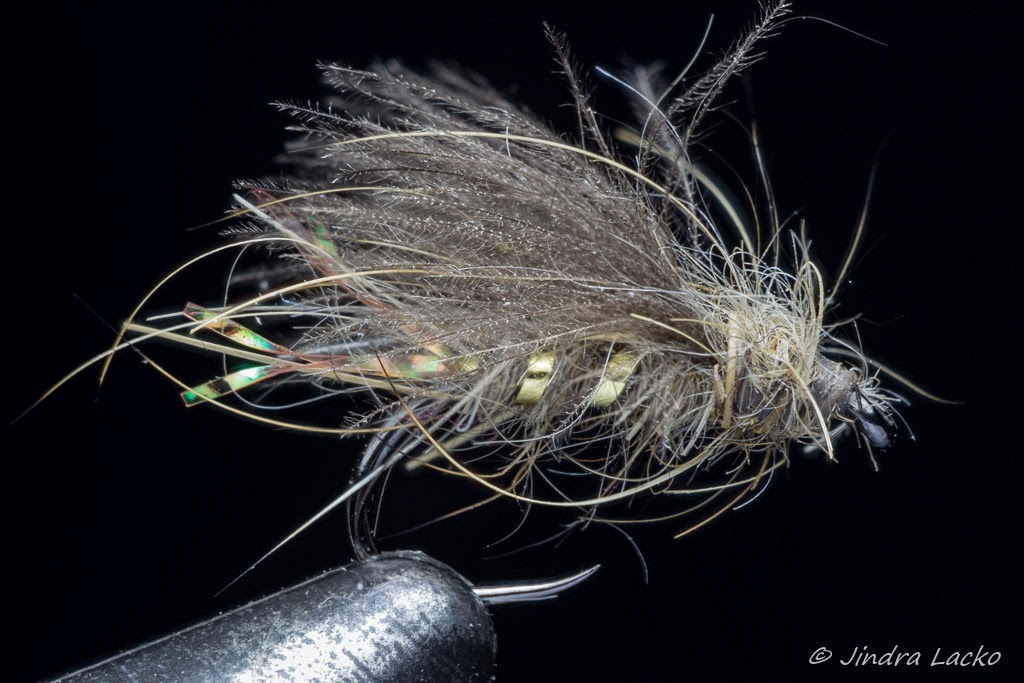The Dries:
On waters running a bit roughly floatation matters. On this type of water #18 CDC gold ribbed hare emerger rules supreme. A smallish fly of familiar shape and nondescript identity.
On smoother water a more delicate presentation and exact imitation is required. In such situations a #18 CDC Olive quill entices many a fish.
On any kind of water an emerger style fly might be required. In such cases a Kamenice klinky convinces.
If the fish refuse imitative style flies an attractor might change their mind. The #18 Red tinsel Hippouros has proved itself over the time
A wet:
Grayling wet fly situations are rare; most of the time the fish work either the surface or bottom. But in the rare - but not impossible - situation when grayling feed in the middle depths a gold ribbed redhead wet often saves the day.
The nymphs:
Grayling are big fans of Caddis, and Caddis styled Czech nymphs. The Olive & Purple is an effective color combination.
When Grayling refuse bright colored nymphs a drab one can convince them to take. A darkish gold ribbed hare's ear is a solid performer in such situations.
Competition fly fishermen often target their quarry with secret and unconventional flies. This one, Сахарин Сахариныч Сиропчик, originated in the Czech competiton scene but proved its worth with grayling all over the world.
Grayling appreciate an occassional attractor, and a hint of fluo green can make the fly light up. A simillar effect can be achieved with fluo orange tip. This fly originated in Slovakia and is called Hrajnoha after one of the legendary bandits of Slovak folk tales.
Fish hugging the bottom of the deepest pools require a special approach. Streamlined flies with body of tungsten, on long and thin fluo leaders. The Nymph skin grub by Craigh Mcdonald is a prime example of this style of fly, and a reliable performer.










No comments:
Post a Comment